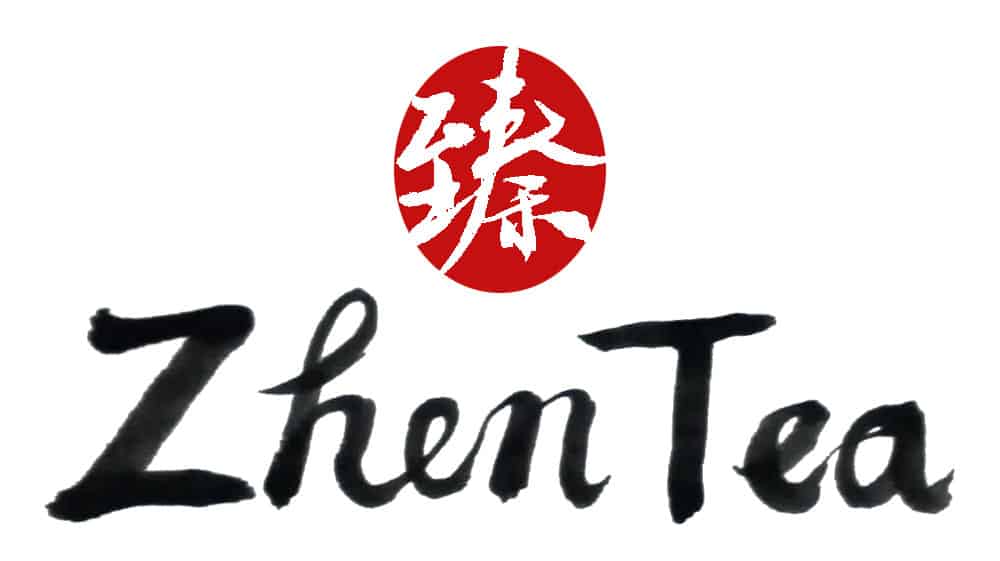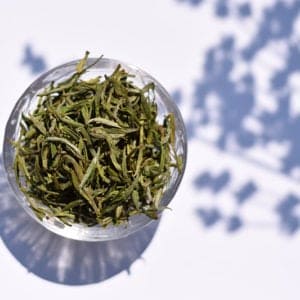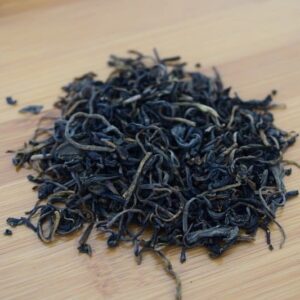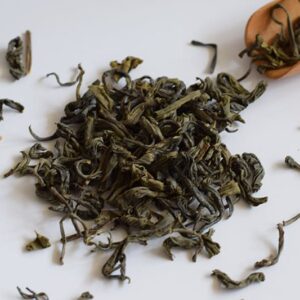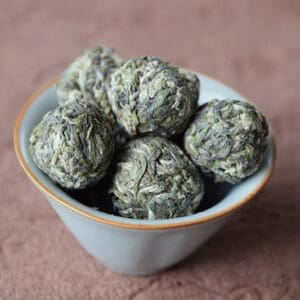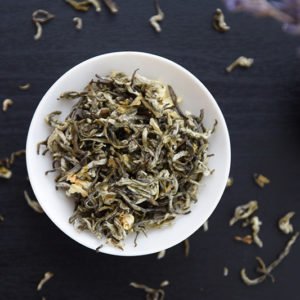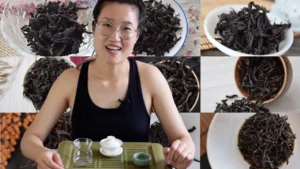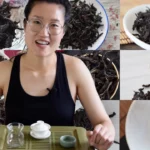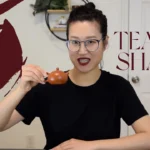Tea Appraisal
China is a big tea country. One of the signs of this is how many different teas there are. There’s a saying that the stars in the sky are countable but the number of teas cannot be counted. There are so many different tea names we see in stores it’s sometimes overwhelming.
SIP ALONG with
Ming Qian Not Long Jing
Price range: $8.00 through $29.00
Dry Leaf: Sweet, light nutty
Liquor Colour: Sparkling green
Liquor Aroma: Sweet pea
Flavor: Sweet snap pea, hints of nuttiness
Mouthfeel: Clean and mouth-watering
Gaiwan Lid: Pea flowers
-
Description
Presenting the exquisite Ming Qian Not Long Jing, a tea that, despite its playful name and unique origin in Guizhou, rivals Ming Qian Long Jing from Zhejiang and provides exceptional value. This tea captivates with a brilliant and enduring flavor, making it the envy of many Long Jing varieties.
From the moment you inhale the dry leaf’s aroma, the sweetness of snap peas beckons, creating a delightful experience from start to finish. The liquor, an enchanting shade of green, shimmers with tea fuzz, teeming with antioxidants and natural sweetness. What sets it apart is its absence of bitterness, replaced by a refreshing soy nutty sweetness that lingers on the palate long after each sip.
Ming Qian Not Long Jing isn’t just about exceptional flavor; it’s a testament to lingering power, wrapped in a clean, mouthwatering mouthfeel. Savor the distinctive character of this unique and enticing tea that defies expectations and provides great value, especially when compared to its big brother from Zhejiang!
-
Additional information
Origin Meitan, Guizhou Province.
Harvest March 24, 2020.
Brewing 3g/150ml at 95°C for 1 ½ min. 3 – 4 infusions.
Storage Sealed well. Keep refrigerated.
You may also like…
-
Guzhu Zi Sun – Ming Qian
Price range: $31.00 through $120.00 -
Huang Da Cha
Price range: $8.00 through $28.00 -
Da Ye Qing
Price range: $8.00 through $29.00
Tea Name
Tea can be named in many different ways. Sometimes by shape, like Zhu Cha (gunpowder tea), Yin Zhen (silver needle). Some are named after their origin, like Xihu Long Jing (West Lake Dragon Well), Putuo Fo Cha. Some are named after legends or historic stories, Da Hong Pao and Tie Guan Yin for example. There are more than 1000 different named teas in China now.
-
Bai Hao Yin Zhen – Top Grade 2019
Price range: $10.00 through $176.00 -
Guzhu Zi Sun – Ming Qian
Price range: $31.00 through $120.00
Classification of Tea
There are many types of tea and they can be categorized in different ways. Plucking time is one method and it gives us, spring tea, summer tea, and autumn tea. You can also categorize tea based on geography, such as high mountain tea or plain tea.
Though there’s no universal standard for categorizing tea, the most popular and scientific way is based on the processing method. Green, white, yellow, oolong, black, and dark tea are the 6 basic tea types.
There are also post-processed teas, meaning the tea goes through another process after being made into one of the 6 tea types. For example, scented tea, pressed tea, and instant teas.
Dark tea generally includes Hunan Hei Cha, Hubei Lao Qing Cha, Diangui Hei Cha. For a long time, the authoritative tea books and dictionaries categorize Pu’er as dark tea, but some experts believe Pu’er should be in its own category.
This book follows the most accepted way of categorizing, which is: green tea, white tea, yellow tea, black tea, oolong tea, dark tea, and scented tea.
-
Dian Hong
Price range: $7.00 through $21.00 -
Huang Da Cha
Price range: $8.00 through $28.00
Part 2 Brewing tea: just 3 steps
If you just want to quench your thirst, simply grab some tea leaves and toss them in some water. But to truly understand the taste of tea, you will need to invest a little time and effort to set the mood, select the tea, water and vessels, learn some brewing and tasting techniques and enjoy the whole experience, Once you know about the techniques of brewing a great cup of tea, you’ll realize this whole tea brewing thing is not as complicated as you thought.
-
Bai Ya Qi Lan
Price range: $10.00 through $34.00
